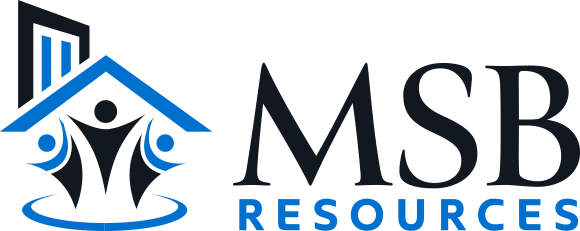Regular one-on-one meetings are a cornerstone of effective management, providing crucial opportunities for performance feedback, career development discussions, problem-solving, and employee engagement. When these discussions are well-organized, they benefit both managers and their employees by improving communication, boosting productivity, and increasing job satisfaction.
This blog post aims to help managers navigate the process of conducting one-on-one meetings. We’ll explore key strategies for preparation, creating the right environment, structuring the conversation, and following up effectively. By implementing these techniques, you’ll transform your one-on-ones from routine check-ins to powerful tools for leadership and employee development.
1. Come Prepared
Preparation is key to conducting effective one-on-one meetings. Before each session, take time to review your notes from previous conversations, ensuring you’re up to date on ongoing discussions and commitments. Create a list of key topics to cover, including performance updates, current projects, and any challenges the employee might be facing. Additionally, consider potential career development opportunities that align with the employee’s goals and the organization’s needs. Be ready to share any updates from the company that could affect your employee. To foster a productive conversation, prepare open-ended questions that encourage dialogue and allow the employee to share their thoughts and concerns. This thoughtful approach demonstrates your commitment to the employee’s growth and allows you to offer specific and meaningful feedback that’s both positive and constructive.
2. Create a Comfortable Environment
Creating a comfortable environment is crucial for productive one-on-one meetings. Choose a private, neutral space where both you and your employee can speak freely without interruptions. Minimize distractions by silencing phones and closing email applications. Begin the meeting with a friendly, informal check-in to set a positive tone. Emphasize that this is a two-way conversation, not a one-sided assessment. Encourage your team member to express their thoughts and concerns openly and show genuine curiosity in their point of view. Ask follow-up questions and actively listen to indicate that you value their insights. Aim to balance discussing work-related issues and personal growth topics. By establishing a transparent atmosphere, you’ll build trust and promote more candid, insightful dialogues with your team.
3. Structure the Conversation
Effectively structuring your one-on-one conversations ensures you cover all crucial aspects of your employee’s work and development. Start with positive feedback and recognition to set an encouraging tone. Then, address ongoing projects and performance updates, aligning expectations and tracking progress.
Next, open the floor to discuss any challenges or obstacles the employee is facing. This is an opportunity to problem-solve together and offer support. Explore opportunities for growth and development, showing your investment in their career. When providing constructive feedback on areas for improvement, be specific and action-oriented. Allow time for the employee to ask questions or voice concerns. Collaboratively set goals and action items, ensuring both parties are clear on expectations. Conclude by summarizing key points and confirming the next steps, wrapping up the meeting productively. While having a structured approach is important, the way you engage in the conversation is equally crucial.

4. Practice Active Listening and Effective Questioning
Active listening and effective questioning are essential for productive one-on-one meetings. Focus completely on the employee, asking open-ended questions to prompt detailed answers and following up with probing questions for deeper understanding. Avoid interrupting or rushing to conclusions; instead, allow the employee to express their thoughts fully. Pay attention to non-verbal cues and use silence effectively to encourage reflection. These techniques foster open communication, empower employees to take ownership of their growth, and demonstrate your commitment to supporting your team members.
5. Address Performance and Provide Feedback
Addressing performance and providing feedback are critical components of effective one-on-one meetings. When discussing recent work, offer specific, actionable feedback that balances acknowledging strengths with identifying areas for improvement. Use concrete examples to illustrate your points clearly. Encourage the employee to engage in self-assessment, which often leads to valuable insights. Collaboratively develop strategies for improvement, ensuring the employee feels supported in their growth. Recognize and celebrate achievements to reinforce positive behaviors. If performance concerns exist, address them promptly and constructively, focusing on finding solutions rather than dwelling on problems.

6. Discuss Career Development
Career development discussions are essential during one-on-one meetings, as they help align an employee’s aspirations with organizational opportunities. Begin by exploring the employee’s long-term career goals, gaining insight into their professional ambitions. Together, identify the skills and experiences necessary for their desired career progression.
Delve into potential growth paths within the company, illustrating how their current position can pave the way for advancement. Collaboratively create a development roadmap that includes both short-term and long-term objectives. Offer guidance on acquiring new skills or experiences, whether through hands-on training, formal education, or special projects. Connect their current responsibilities to their career goals, demonstrating how their present work contributes to their future success. Finally, explore potential mentorship or training opportunities that can further bolster their professional journey.
7. End with Clear Action Items and Follow-Up
Effectively concluding your one-on-one meeting is essential for ensuring productivity and continuity. Begin by summarizing the key points discussed during the conversation. This recap helps reinforce important topics and ensures both parties are on the same page.
Work together to establish specific, measurable goals with your team members, assigning clear action steps for both of you. Set realistic deadlines for these tasks to maintain accountability. Before ending the meeting, schedule the next one to maintain regularity. Document the main outcomes of the discussion for future reference. Commit to following up on the agreed-upon actions, and encourage your team members to reach out if they need assistance between meetings. This approach fosters ongoing communication and demonstrates your dedication to the employee’s growth and success.
Final Thoughts: Making One-on-Ones Count
To make your one-on-one meetings truly effective, prioritize consistency to build trust while remaining flexible enough to adapt to each employee’s unique needs. Always follow through on agreed actions and seek feedback to improve the process continuously. Strike a balance between structured discussion and open conversation, allowing room for valuable, unexpected topics. Above all, focus on genuinely connecting with your team members – these meetings are as much about building relationships as they are about managing performance. For expert guidance on developing effective management strategies, including optimizing your one-on-one meetings, visit MSB Resources’ Workplace Solutions to learn how we can support your leadership journey.


